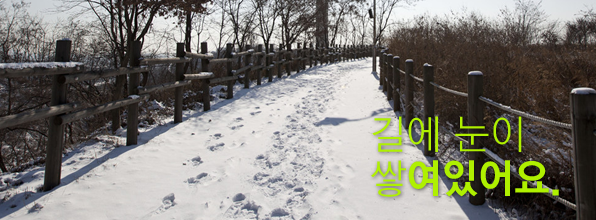TTMIK Level 7 Lesson 24

In Level 6 Lesson 21 and 23, we looked at how the passive voice works in Korean. In this lesson, let’s learn a structure you can use with the passive voice to say that something has been put into a certain state and stays that way.
For example, the verb for “to put something somewhere” is 놓다 [no-ta]. The passive voice is 놓이다 [no-i-da], so you can say 놓였어요 to say “it was put down (on the table/ground/etc)”.
Now, the following structure is used when you want to say that something is on the floor/table/etc, but imply that it has been put down there by someone.
Passive Voice + -어 있다
= to have been put into a certain state (by someone) and stay that way
What’s the difference between “Passive Voice” and “Passive Voice + -어 있다”?
Passive voice describes that action as it gets done, where as passive voice + -어 있다 expresses the state that the subject is in as a result of the passive action. This ‘resultant state’ structure is more commonly used in Korean than in English, so things you can express in English with just the passive voice are often expressed through this structure.
Examples
1.
잡다 = to catch
잡히다 = to be caught
잡혀 있다 = to be in custody, to have been caught and is still caught now
2.
깨다 = to break
깨지다 = to be broken, to get shattered
깨져 있다 = to be in a broken state, somebody broke it and it’s still in that state
3.
켜다 = to turn on, to switch on
켜지다 = to be turned on, to be switched on
켜져 있다 = somebody turned it on and it’s still on
4.
쌓다 = to pile things up
쌓이다 = to be piled up
쌓여 있다 = to have been piled up (e.g. snow)
5.
열다 = to open
열리다 = to get opened
열려 있다 = to have been opened and stay open
**Note that you can’t use this structure with transitive verbs.
Sample Sentences
1. 문이 열려 있어요.
[mu-ni yeol-lyeo i-sseo-yo.]
= The door is open!
2. 에어컨이 아직 켜져 있어요.
[e-eo-keo-ni a-jik kyeo-jyeo i-sseo-yo.]
= The airconditioning is still on.
3. 여기 사과가 한 개 놓여 있어요.
[yeo-gi sa-gwa-ga han gae no-yeo i-sseo-yo.]
= Somebody put an apple here.
= Here’s an apple.
4. 이 마을은 산으로 둘러쌓여 있어요.
[i ma-eu-reun sa-neu-ro dul-leo-ssa-yeo i-sseo-yo.]
= This town is surrounded by mountains.
5. 파란색으로 칠해져 있는 간판 보여요?
[pa-ran-sae-geu-ro chi-rae-jyeo it-neun gan-pan bo-yeo-yo?]
= Do you see the sign there that’s painted in blue?